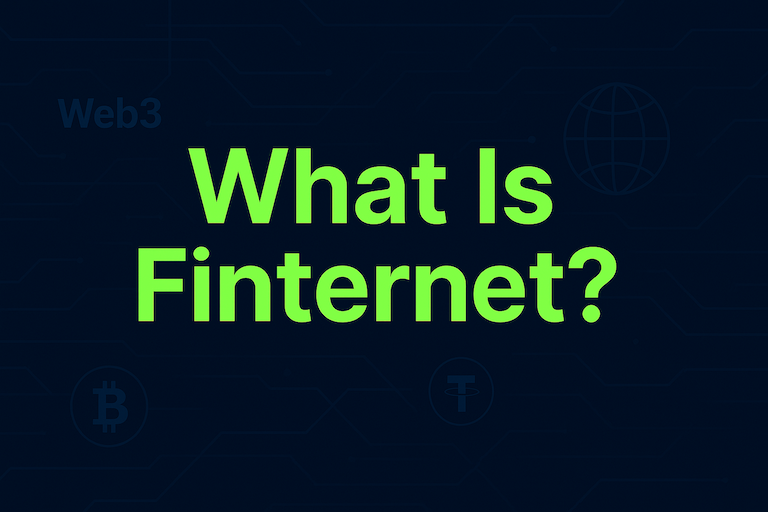Under the Hood: The Inner Workings of DApps
Feb 7, 2025
Decentralized applications (DApps) represent a significant shift in how software is developed and utilized. Unlike traditional applications that rely on centralized servers, DApps run on blockchain technology, offering enhanced security, transparency, and user control. This blog post delves into the architecture, components, and operational mechanics of DApps, shedding light on the technologies and methodologies that enable them to function effectively. By understanding how DApps work, developers and users alike can better appreciate the potential they hold for various industries. This exploration will provide insight into the fundamental aspects of DApps that are essential for anyone looking to engage with this revolutionary technology.
What Are DApps?
DApps, or decentralized applications, are software applications that operate on a blockchain or peer-to-peer network. They are designed to be open-source, meaning that their code is accessible to anyone, fostering transparency and collaboration. DApps leverage smart contracts, which are self-executing contracts with the terms of the agreement directly written into code. This automation allows for trustless interactions between parties, reducing the need for intermediaries. The fundamental difference between DApps and traditional applications lies in their decentralized nature and the reliance on blockchain technology.
They are built on blockchain networks.
They utilize smart contracts to handle transactions.
They are open-source, promoting transparency.
They operate without a central authority.
They aim for user autonomy and privacy.
The Architecture of DApps
The architecture of DApps can be categorized into three main layers: the front-end, the back-end, and the blockchain network. The front-end of a DApp is similar to traditional web applications, consisting of the user interface that interacts with the user. This layer often involves web technologies like HTML, CSS, and JavaScript. The back-end, however, is where the uniqueness of DApps lies, as it is composed of smart contracts deployed on a blockchain. These smart contracts are responsible for executing the application’s logic and managing its data. The blockchain network serves as the underlying infrastructure that ensures decentralization and security.
Front-end built with familiar web technologies.
Back-end consists of smart contracts for logic execution.
Blockchain network provides security and decentralization.
Data is stored in a distributed manner across nodes.
User interactions are recorded on the blockchain for transparency.
Smart Contracts Explained
Smart contracts are crucial to the functionality of DApps. They automate processes and ensure that transactions are executed as agreed without the need for intermediaries. Written in programming languages specific to blockchain platforms, smart contracts contain the rules and conditions governing transactions. Once deployed on the blockchain, they cannot be altered, ensuring that the applications remain tamper-proof. The inviolable nature of smart contracts contributes significantly to the trustworthiness of DApps.
Smart contracts automate transactions and processes.
They are written in blockchain-specific programming languages.
Once deployed, they cannot be changed or tampered with.
They enforce the rules and conditions of agreements.
They enhance the trust and reliability of DApps.
User Interaction with DApps
User interaction with DApps is a critical aspect of their functionality. Typically, users access DApps through web browsers or dedicated applications that connect to the blockchain. Wallets are essential for users to interact with DApps, as they store the user's private keys and allow them to send transactions. The user experience can differ significantly from traditional applications, as users may need to understand concepts like gas fees and transaction confirmations. Moreover, DApps often require users to take responsibility for their keys, emphasizing the importance of security and personal control.
Users access DApps via browsers or dedicated applications.
Wallets store private keys necessary for transactions.
User experience can include learning about gas fees.
Transaction confirmations may take time compared to traditional apps.
Emphasis on personal responsibility for security is paramount.
Benefits and Challenges of DApps
DApps come with a range of advantages and challenges. On the positive side, they offer increased security, as data is distributed across a network rather than stored in a centralized server. This decentralization can lead to enhanced privacy and user control. However, DApps are not without their challenges. Issues such as scalability, user experience, and regulatory uncertainties remain significant hurdles. Developers must navigate these challenges while trying to create seamless and efficient applications.
Increased security through data decentralization.
Enhanced privacy and user control over data.
Challenges include scalability and user experience.
Regulatory uncertainties can impact DApp development.
Developers must innovate to overcome these hurdles.
The Future of DApps
The future of DApps looks promising as they continue to gain traction across various sectors. Innovations in blockchain technology are likely to improve scalability and interoperability, making DApps more accessible to users. As more individuals and businesses recognize the benefits of decentralization, the adoption of DApps is expected to increase. Additionally, advancements in user interface design may help bridge the gap between traditional applications and DApps, making them more user-friendly. The potential for DApps to revolutionize industries such as finance, gaming, and supply chain management cannot be overstated.
Innovations will enhance scalability and interoperability.
Increased adoption expected as benefits become recognized.
User interface advancements may improve accessibility.
Potential to revolutionize multiple industries is significant.
Ongoing development will shape the future landscape of DApps.
Conclusion
DApps represent a groundbreaking shift in the way applications are built and used, promoting a decentralized and user-centric model. Understanding their inner workings—from architecture and smart contracts to user interactions—provides valuable insights into their potential and challenges. As technology continues to evolve, the future of DApps offers exciting possibilities for innovation and transformation across various sectors. Engaging with DApps today can prepare individuals and organizations for a more decentralized tomorrow.
Start your safe cryptocurrency journey now
Fast and secure deposits and withdrawals, OSL safeguards every transaction !


